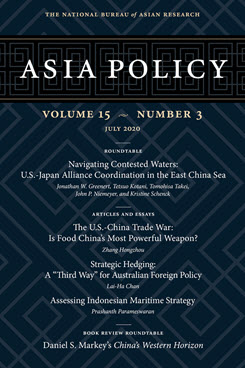Gray Zones and Vulnerability in the U.S.-Japan Alliance
Operational and Legal Dimensions
This essay examines the gray-zone situation around the Senkaku Islands, assesses the vulnerabilities for the U.S.-Japan alliance, and proposes three measures to cope with the definitional and policy gaps between the two nations.
Executive Summary
MAIN ARGUMENT
The vulnerabilities of the U.S.-Japan alliance in a gray zone come from structural and internal gaps in domestic laws, interpretation of international law, and views on the operation of the military and law-enforcement agencies. While it is difficult to fix these issues in the short term, if these gaps are left unchallenged, managing gray-zone contingencies and close interoperability between the Japan Self-Defense Forces and the U.S. military will be affected. To avoid this outcome, three steps are recommended. The first is to deepen exchanges and promote shared understanding about the gaps among practitioners and legal advisers in Japan’s National Security Secretariat and the U.S. National Security Council. The second is to create a Japanese version of the U.S. Department of Defense’s Law of War Manual. The third is conducting various exercises that test the legal limits of a joint response.
POLICY IMPLICATIONS
- While Japan and the U.S. agree that the gray-zone concept is characterized by both a situational aspect and a time-and-space aspect, their conceptions differ in terms of where a gray zone ends and war begins due to dissimilar domestic laws. This variance in definition could be a potential vulnerability in a joint U.S.-Japan military response.
- China seems to be working to achieve its political and territorial ambitions in five stages. Japan and the U.S. must agree on what stage in the process China is currently conducting operations and how to best counter it.
- A key vulnerability of the U.S.-Japan alliance is rooted in the difference of interpretations on the right of self-defense. As allies, they must be able to understand and manage these differences in the event of a gray-zone contingency.
Tomohisa Takei was the 32nd Chief of Maritime Staff in the Japan Maritime Self-Defense Force (Japan).
About Asia Policy
Asia Policy is a peer-reviewed scholarly journal presenting policy-relevant academic research on the Asia-Pacific that draws clear and concise conclusions useful to today’s policymakers. Asia Policy is published quarterly in January, April, July, and October and accepts submissions on a rolling basis. Learn more


